Always Smiling – Three Generations of Dentists, Stories and Holiday Cards


BROOKLYN HEIGHTS – I wanted to make life easier and find a new dentist, but mom balked: “You can’t give up the Moshmans, just because you moved to Midwood.”
I’ve been making this pilgrimage from the middle of Brooklyn the Brooklyn Heights brownstone office of Moshman Dental at 89 Remsen Street, for ten of the 40+ years they’ve been my dentists.
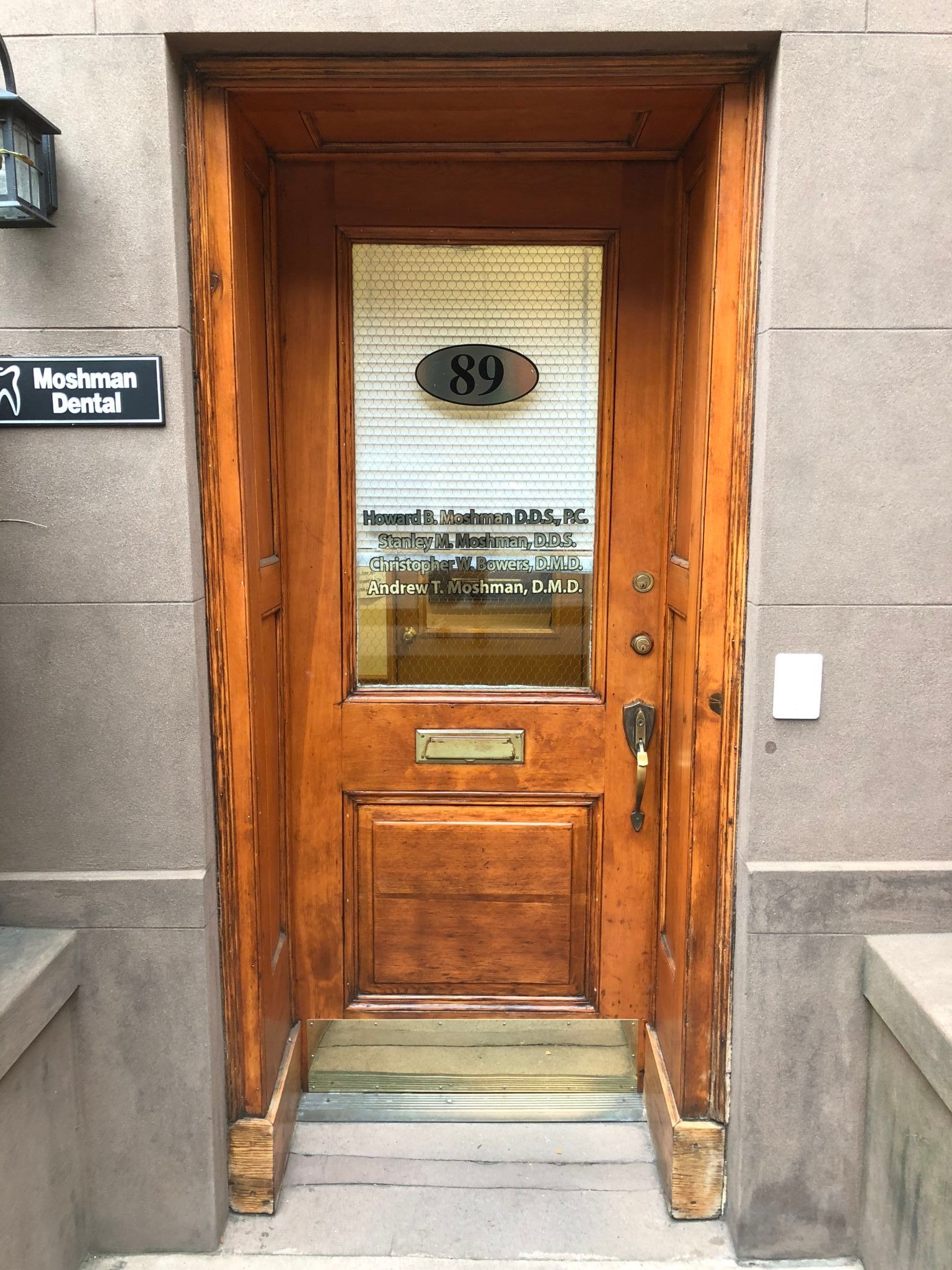
I was in for a routine cleaning when it struck me: this toothsome story of a continuous family practice — started on Clark Street in 1949, moved to its present location in 1966 —was aching to be told. After all, the latex-gloved hand gingerly picking each molar with that metal, tooth-picky instrument, did not belong to the dentist I had at age 11, Dr. Howard Moshman, nor to the dentist I had my entire adult life, his son, Dr. Stanley Moshman. These were Howard’s grandson’s fingers working in my mouth, the amiable, rusty-bearded Dr. Andrew Moshman.
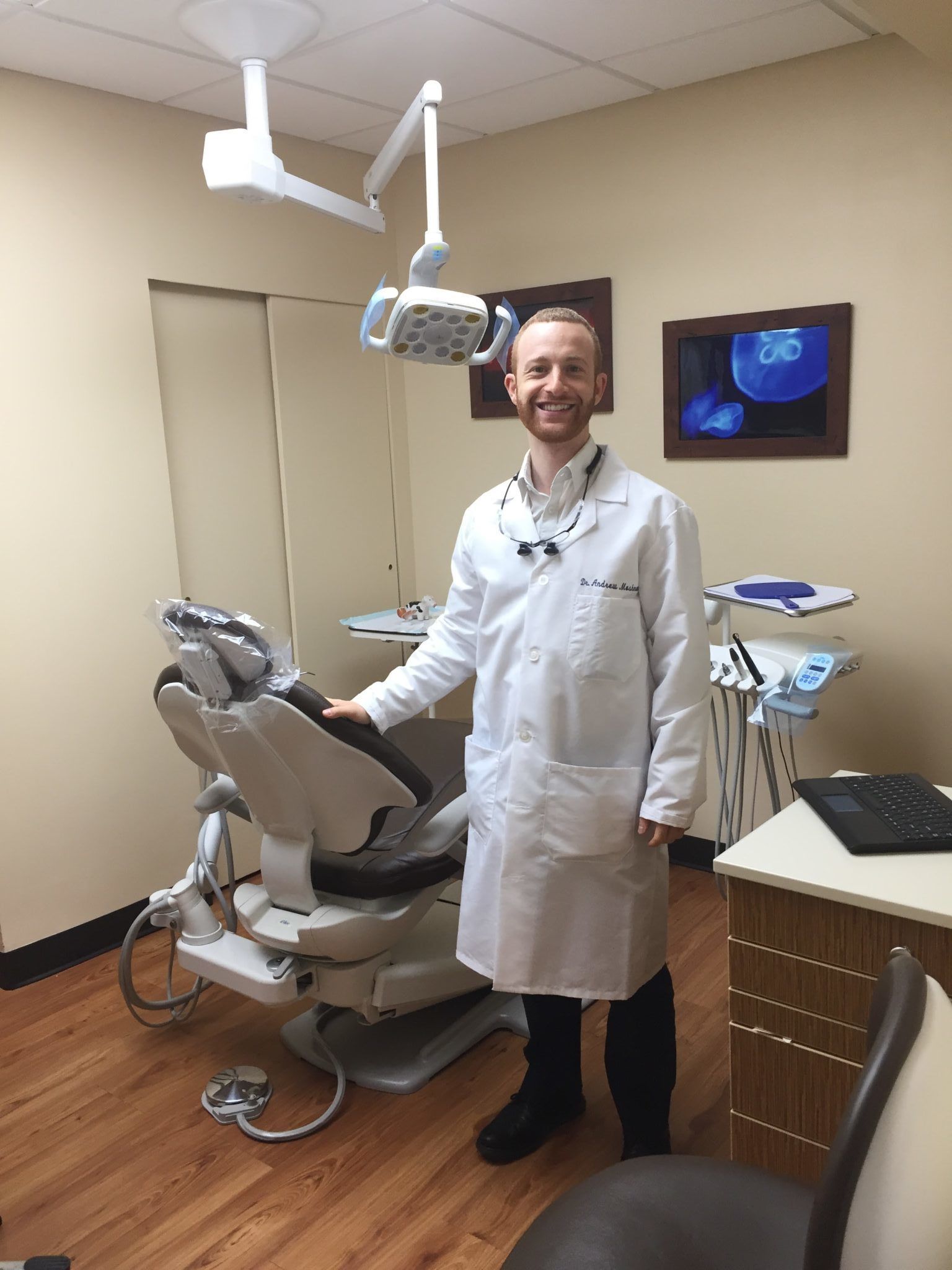
Relaxing in Andrew’s chair, basking in dental lamp glow, and amused by an odd print of a pineapple on the wall, my mind wandered back forty-three years to Howard’s chair, and the photo gallery transforming the space of his operatory.
Howard Moshman was a shutterbug, starting off at age twelve, with a box camera and his own darkroom. Later, he toted his camera on holidays across continents. I recall herds of ruminants crossing dusty plains, comely girls balancing baskets on head or hip, and cobblestone steps spiraling heavenward…

Where did you travel?
“A lot of pictures on the wall were from China, and safaris in Africa,” explained Howard. “The elephants and Thompson’s gazelles… and Antarctica was a great trip! There was a penguin with its flippers out, walking towards me. I kept taking pictures as it came towards me. And there was a panoramic I took in India of people and a cow. It was just roaming in the streets, because it’s a sacred animal, and they don’t kill it.”
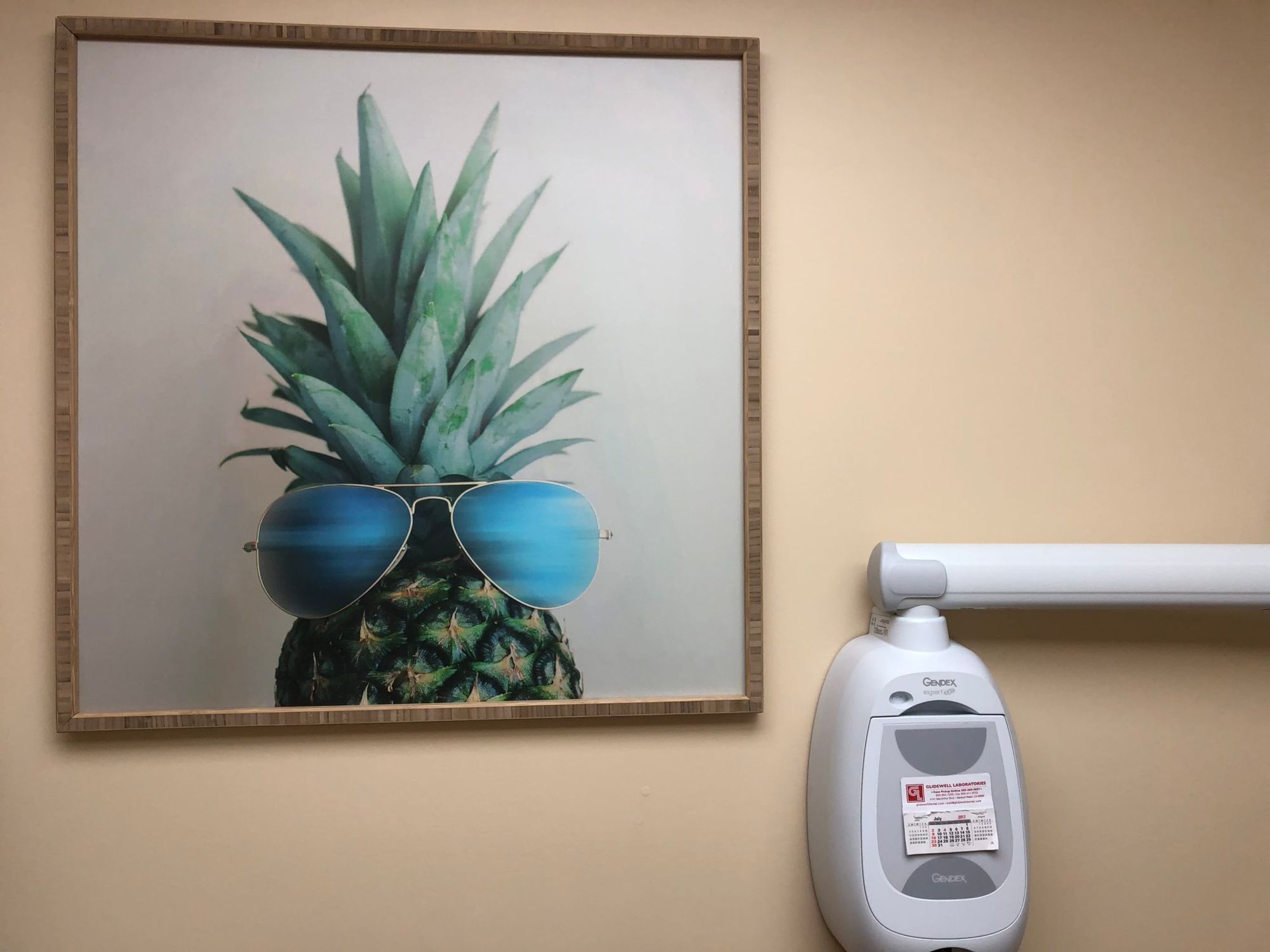
“You are much more interesting than I am Grandpa,” observes Andrew. “All I have in my operatory is a picture of a pineapple with sunglasses. But he makes me very happy. Oh and a TV to stream Netflix. That’ll be mounted on the wall soon.”
“Where are those pictures now?” I ask. “I’d love to seem them back up on the walls…”
“They need new frames,” says Stan. Actually, Stan is a photographer in his own right; his photos now occupy wall space.
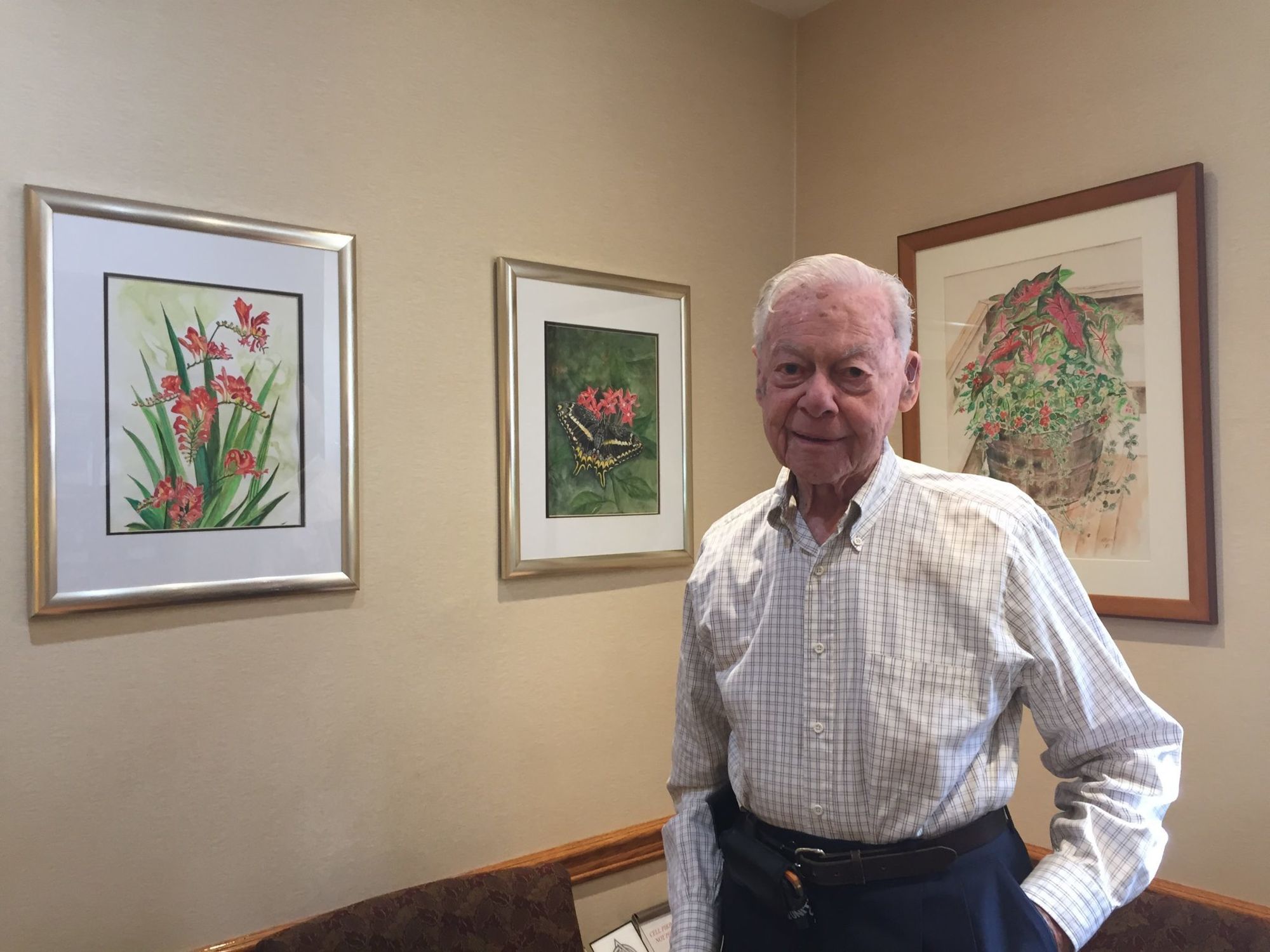
Howard paints too. His own watercolors still brighten the waiting room. It’s coming back to me… Highlights Magazine, Ranger Rick and Dr. Moshman’s butterflies on the walls. I ponder the overlap between the scientific and artistic mind. Both dentistry and painting require precision and a steady hand – there’s much artistry in crafting beautiful smiles.
Why dentistry?
“The Navy stepped in and picked up the tab for dentists and physicians,” explained Howard. “They made it a three-year course and we went straight through the summer. And at the end of the three years, I had my DDS and went straight into the navy for two years. The war was ending though…”
What was the profession of dentistry like when you started?
“The lights came from the windows and high overhead lights,” described Howard, “but there were no lights that went directly into the mouth. We each carried a little flashlight to see what we were doing.”
“That sounds miserable,” observes Andrew.
“And because the equipment wasn’t electrified, we had to work with foot pedals to operate the drills. We really had to lean on the drill. We got up to 20 revolutions per minute.”
“What do you get up to now?” I ask.
“They’re in the hundreds of thousands now, ” Andrew answers.
“We worked dry too,” Howard continues. “There was no water to cool the tooth. As soon as water became available, I let patients hold a bottle of water with a spray cap on it, and a tube that went to the end of the drill. I’d say ‘I’m starting’ and they would press, and the water would come out.”
Andrew’s jaw drops to his lab coat. “Yes, that also sounds miserable.”
“And then they got water to come automatically to the drill, and added fiber optics, so there was a light at the end of the drill.”
No more flashlight.
“There were only 2 kinds of fillings when I started,” explains Howard, “the silver amalgam, and the silicate cement, which was a terrible filling used in front teeth. We had acrylic in order to make full dentures. But it was a terrible material. One of the dentists complained ‘it shrinks and it stinks,’ because it would shrink away from the edges of the cavity and leak, and then decay would form underneath. When you took it out the odor was overwhelming…”
“So there were growing pains in the field of dentistry,” I conclude.
“That’s right,” agrees Howard. “They worked on the composites for a long time. And now they have excellent composites which are almost as hard as the silver amalgam fillings. Silver amalgam was a great filling. It saved so many teeth.”
“For cosmetics it wasn’t very good,” observes Stan. “But there are some places where none of the alternatives will do a good job.”
You can read more about Brooklyn native Howard Moshman’s odyssey through dental school, the Navy, and his Brooklyn Heights practice, in his memoir.
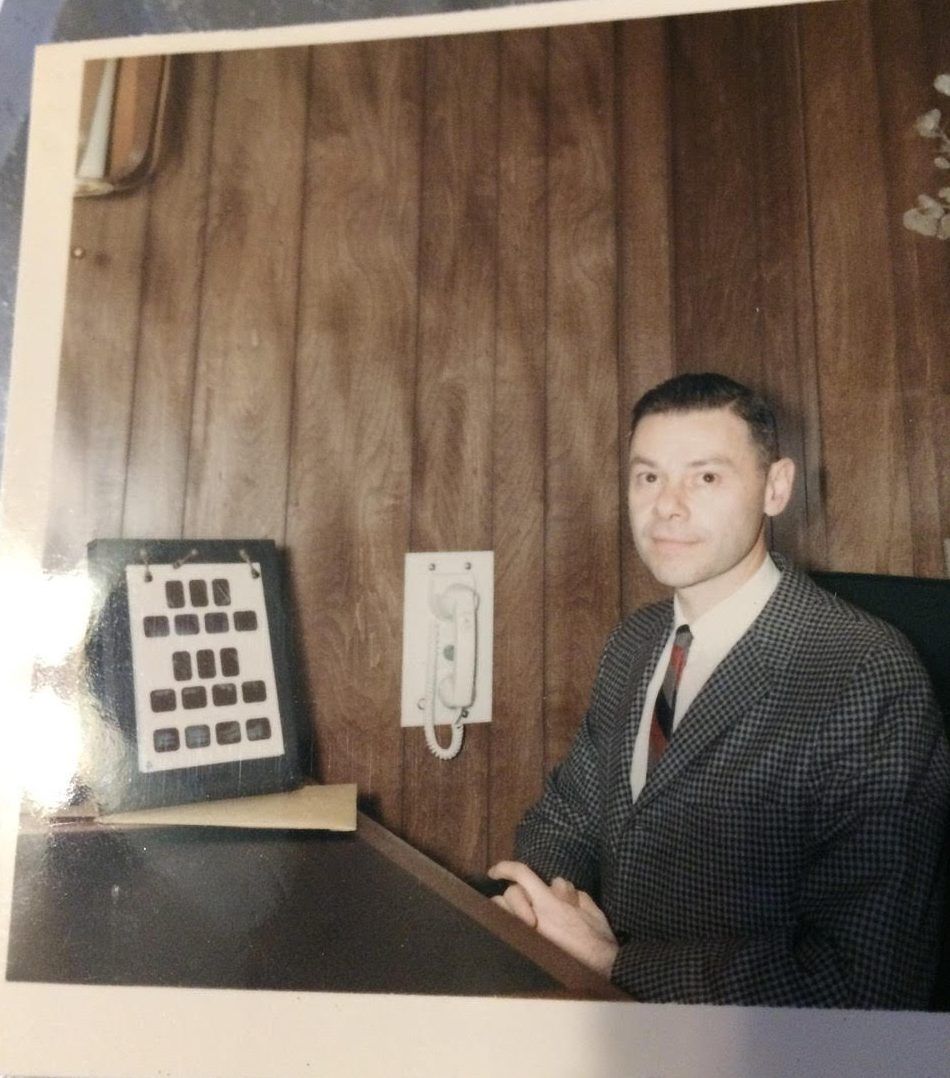
Legacy
As we’re chatting over deli sandwiches, the next question is for Stanley.
What has it been like to follow in the footsteps of a successful dentist, in a demanding neighborhood, where people expect good work?
“You’re always having to live up to a certain standard,” says Stan. “I decided very early I wanted to do what my father did. I learned from the age of ten how to develop X-rays for my dad in the darkroom. By the way, we completely eliminated X-rays that had to be developed in 2011. During college I assisted my dad here, graduated in 1978, and did a residency at Long Island College Hospital, which unfortunately no longer exists.
When I was new to the practice, I saw a woman who had been a longtime patient of Dr. Howard Moshman. She needed a new denture and it needed several adjustments. She had to come back until it was just right. She complained that when Dr. H. Moshman made her denture, it was perfect on the first try, and she asked how come I needed to make adjustments? We looked back into the records and it turns out she had come back for like twenty adjustments with my dad.”
This story is met with a round of knowing laughter.
“It’s very hard to get patients of long standing to go to another dentist,” reflects Howard, “even if it’s your own son with the same name. There was this patient who always wanted me to take care of him, and he came in once with a tooth that was hurting him. I looked at it, but told him I really couldn’t take it out at that moment. It was loose, it had to be removed. I assured him Stan could do it. He didn’t want to go to Stan. I told him I couldn’t leave my patient and I had another one right after, and I just couldn’t do it. I said Stan’s been in the practice for 15 years already, he certainly can take out that tooth. So he agreed, and he went into Stan’s treatment room. And as he was finished, maybe 10 minutes later, he came past my doorway and he looked into my treatment room and he said: ‘You know, the kid’s good!’”
“At least once a day I have someone who tells me ‘I’ve been here since your Grandpa!’” says Andrew.
“We do have 3rd generation patients,” agrees Stan. “Your kids Maria, are in that category.
Indeed.
Outside Partners
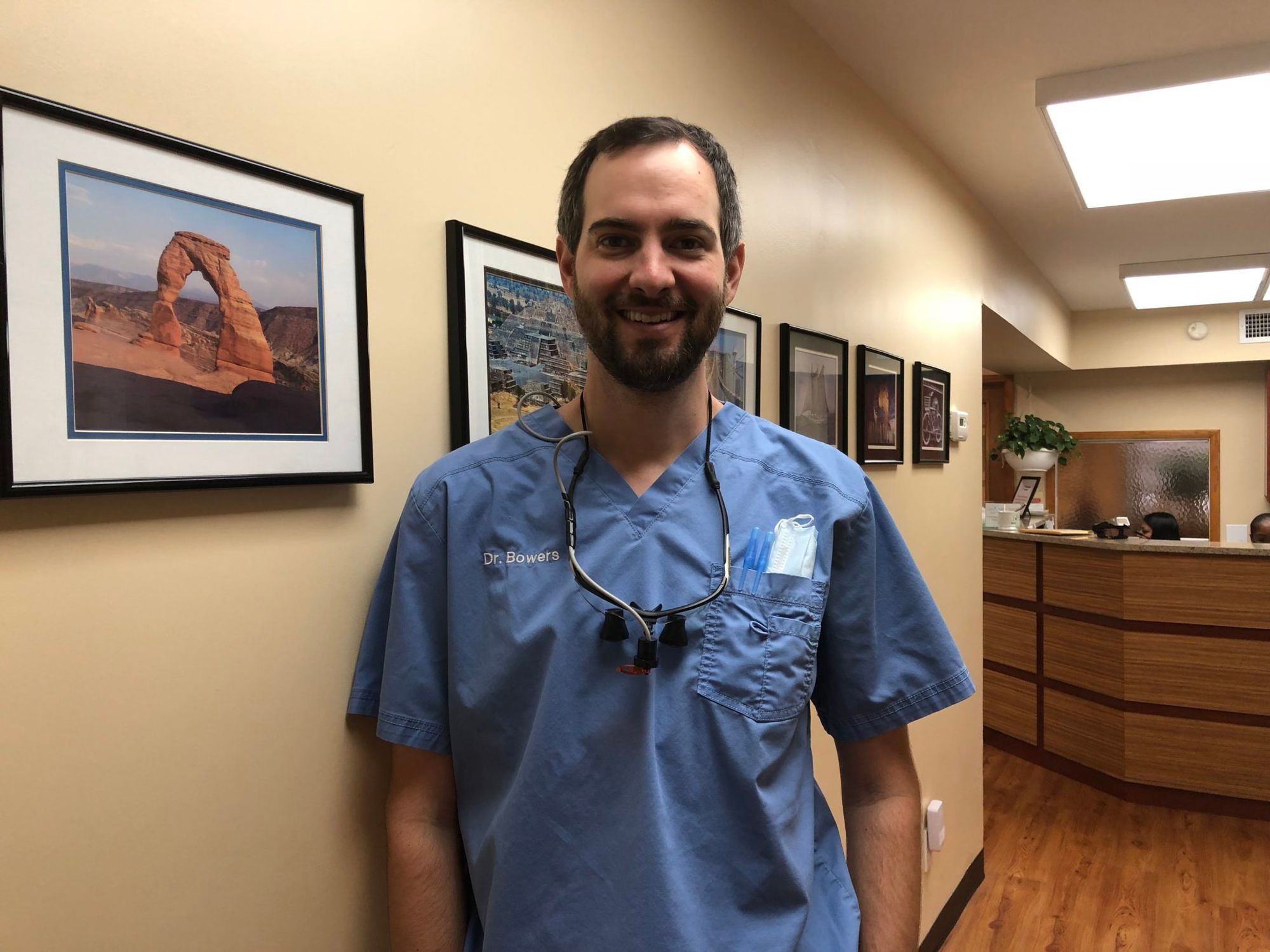
“Although it’s a family business,” Stan adds, “for more than thirty-eight years we had a partner, Dr. Sussman. He was an excellent dentist who developed his own following, and so when I joined the practice there were already two established dentists. Neither of their patients were ready to go to the new guy, and for most of my career I was the ‘new guy’.
Then all of a sudden both partners were retiring from practice and I became the ‘old guy’. I knew all the dental residents from LICH and I worked with Dr. Bowers for a year. I saw his capabilities and how he interacted with his patients and I realized he would be a valuable addition to the office. Andrew was no-where ready to join. So Dr. Bowers stepped in and took up the slack, and now he has his own following. Same thing.”
The importance of bedside manner
Over four decades, all three Moshmans have managed to put my prone self at ease in the chair. We’ve joked and noodled the world’s problems too (coming up with concrete solutions for providing clean water in drought-ridden communities, turns problematic under laughing gas). With their gift of bedside manner, the Moshmans, and Dr. Bowers too, have distracted patients like me from the real reason we are there.
“It’s important, and I think it’s very hard to teach it,” reflects Howard. “With us it just comes naturally, because we’re attracted to people. That’s why we’re in this profession. If you don’t like people, don’t be a dentist.”
“You’re in their mouths,” I add, biting down on a juicy chicken cutlet, and mopping BBQ sauce from my chin, “you’re right up in there.”
“You’re working in a very important place,” Howard says, with weight to his words. “The mouth is a source of pleasure. And you can’t teach people how to be light-fingered. It just seems to come naturally to me and to Stan and to Andrew.”
How far have you gone to accommodate your patients?
“For patients of record,” says Stan, “we routinely come in on off days for anyone who’s in pain.”
“I’ve stayed very late on a Friday. We want our patients taken care of promptly,” adds Andrew.
“So it’s really a family sacrifice, isn’t it?” I conclude.
“It is,” replies Howard. “I once came into the office on Thanksgiving morning for the head of a household who had a toothache. I had to turn everything on, took the X ray, and he had a lower molar which really needed a root canal. It was going to give him serious pain and it was already starting. I anesthetized it, opened it up and started the root canal. I put a dressing inside it and gave him an antibiotic, just in case it began to hurt. I called him later, when he was in the middle of eating his Thanksgiving dinner, and he said it was feeling fine. I felt so grateful that this had worked out for him.”
“And he was able to eat turkey?” I asked.
“He was able to eat that turkey,” said Howard, “and it would have turned into something very bad if I hadn’t taken care of him right then.”
What else do you need to be a good dentist?
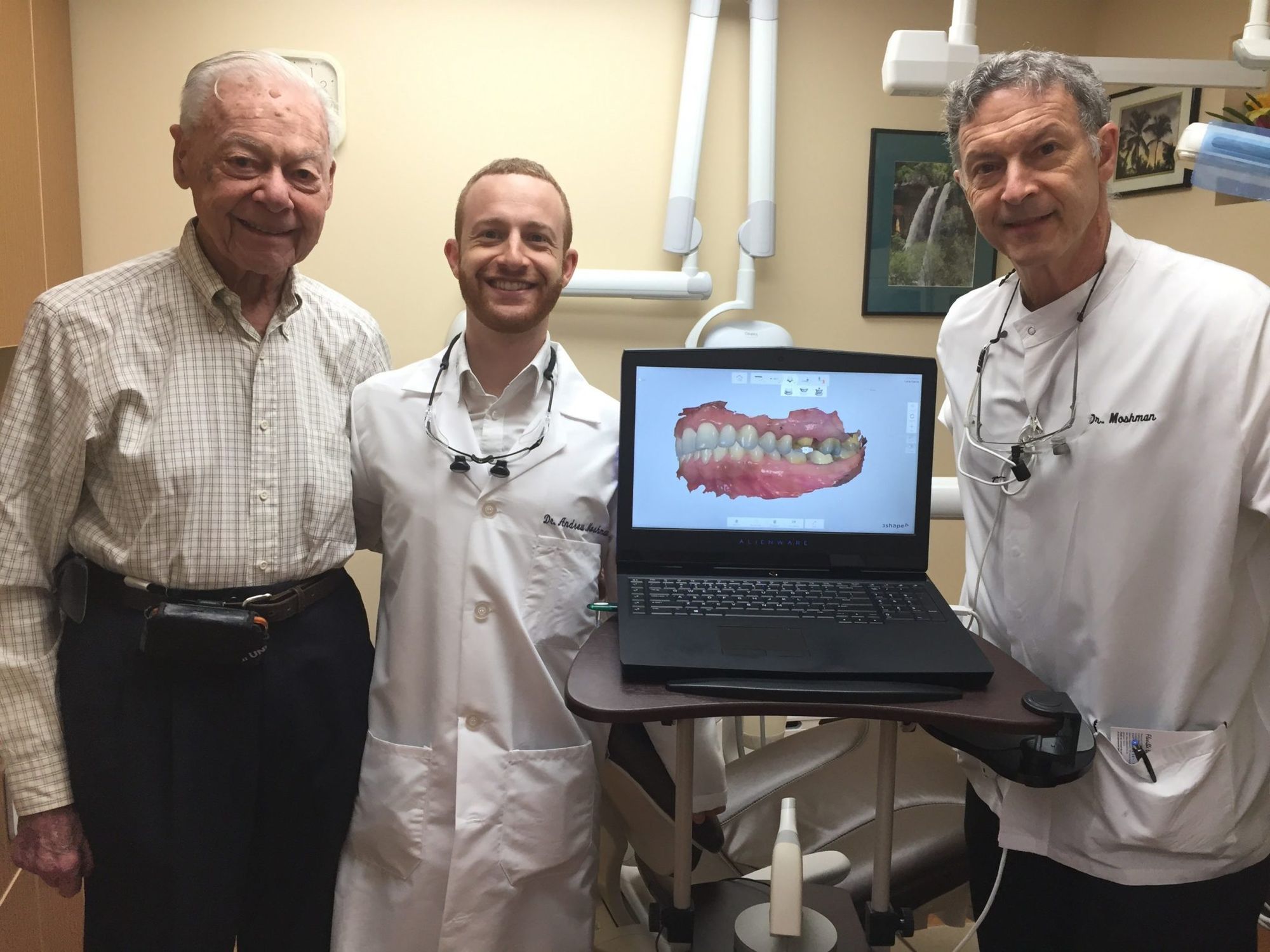
“You need to keep up with what’s new,” offers the nonagenarian.
“It keeps on trending towards everything being digital,” Andrew adds. “You can plan things out to a fraction of a millimeter on the computer before you do it. We just purchased a digital scanner, so we’re no longer doing gooey impressions. From cosmetic cases to implant surgery, we take a stream of photos of the tooth, and thread them together to get a 3-D image of someone’s mouth.”
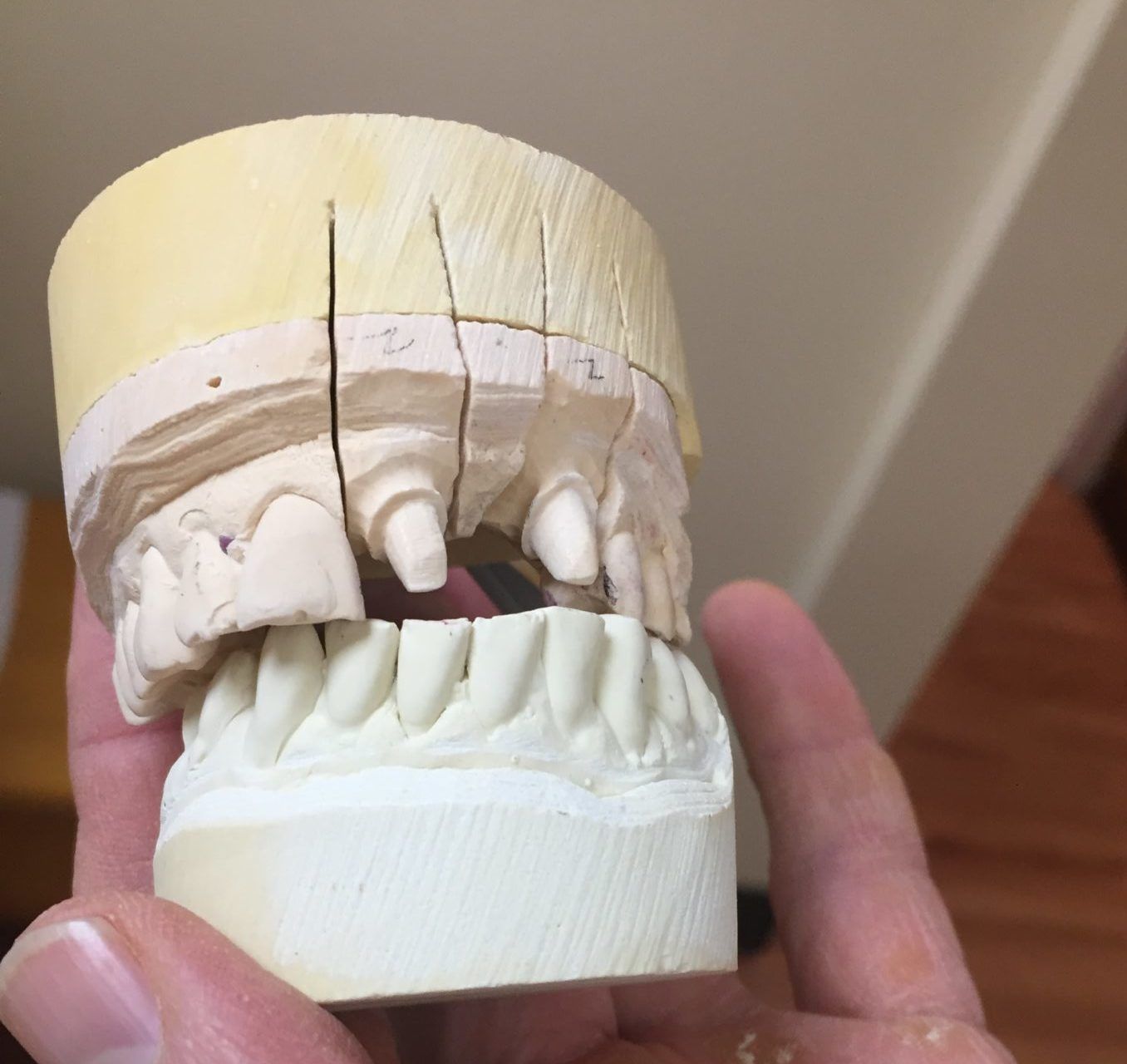
“It still takes two visits to do a crown,” Andrew continues. “But it’s much faster. First you prepare the tooth, do an impression, and send it digitally to the lab. The patient leaves with a temporary crown. We get the permanent crown back in the mail in under two weeks, and it drops right in. The old impression material was gooey, you’d have to bite into it, and wait for it to harden. There was a lot of drool involved.”
“Bet you can’t wait for your next crown?” jokes Stan.
The Hygienists
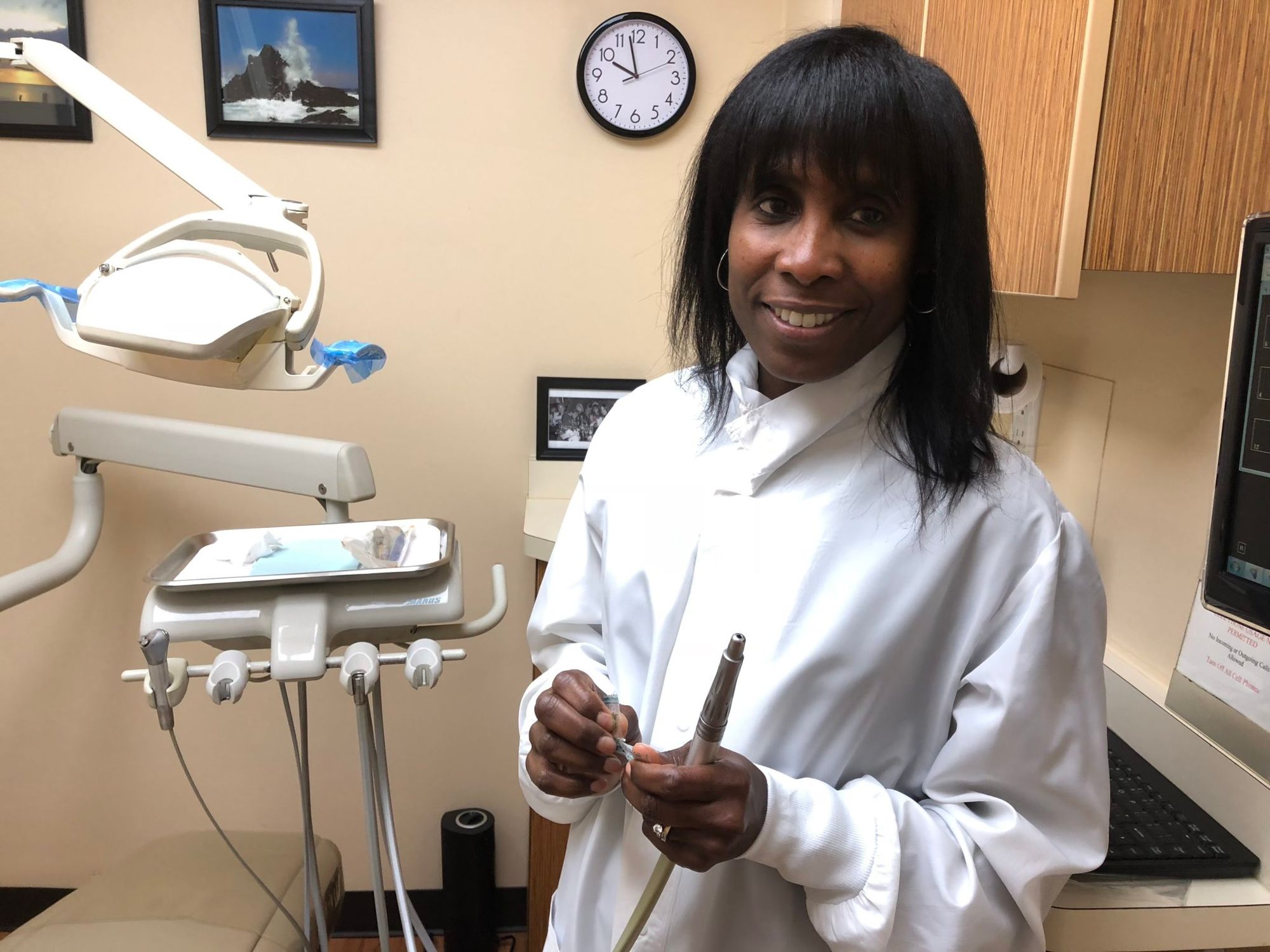
“Speaking of cleanings, it seems like you’ve always had Carolyn and Terri, the two gentlest hygienists a kid could ever want (or a cowardly adult, for that matter). I remember you had these fizzy red tablets you made me chew that showed where the cavities lurked, right? Do you remember those?”
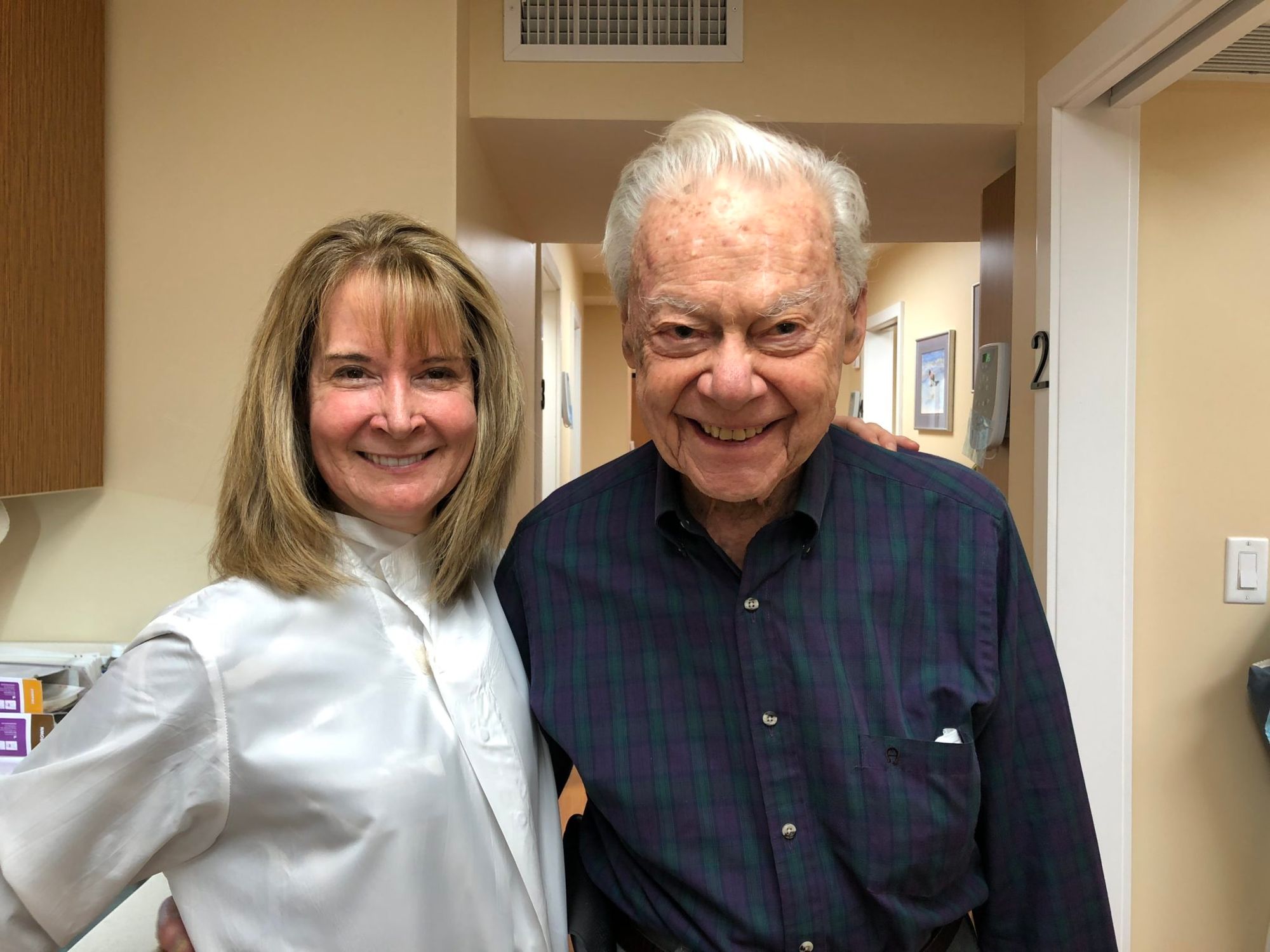
“That showed where there was plaque on the teeth,” Stan corrects me, “where you had to do a better job brushing.”
“I used those for a time,” recalls Howard.
“Patients don’t like them,” adds Andrew, “because when you leave, everybody on the outside world also knows where you have to do a better job brushing.” Andrew is very funny. Maybe the funniest of the three.
The Moshman Women
“At first I was my own secretary,” remembers Howard. In the early days he had to let an office manager go when she got too familiar with the patients. His wife Ruth stepped in to help with the billing soon after the office relocated to Remsen Street.
“I didn’t worry that she was gonna leave me,” laughed Howard.

Ruth did stay on, but Howard got another office manager too, because Ruth Moshman still had a young family at home to raise.
“Karen came on board when the kids started school,” says Stan.
Stan’s effervescent wife Karen is the fixative that keeps the smile on this family business shiny bright. An efficient office manager, whose copper curls and three-mile smile are as uplifting to patients as a “no cavities” report, Karen has thoughtfully ordered me this Brooklyn Bridge sandwich (saucy chicken cutlet, tomatoes, peppers, and pickles on a roll) from Lassen & Hennings, a deli that has been on Montague Street since, like forever. She knew that would mean something to me, one of L&H’s, signature sandwiches, named after Brooklyn landmarks.
Seasons’ Greetings from the Moshmans
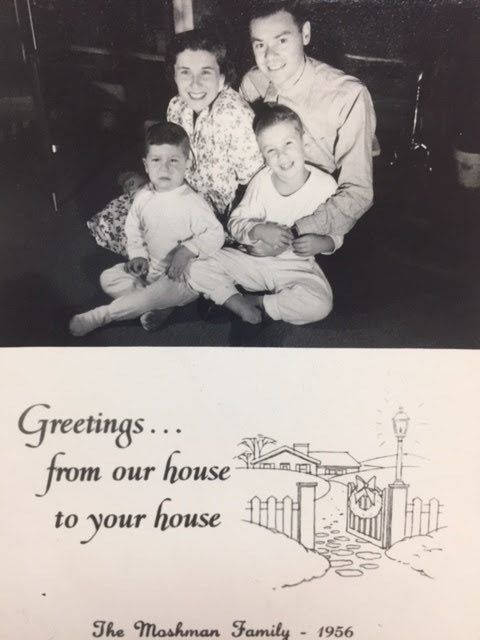
For decades one of the traditions Moshmans had was the holiday card.
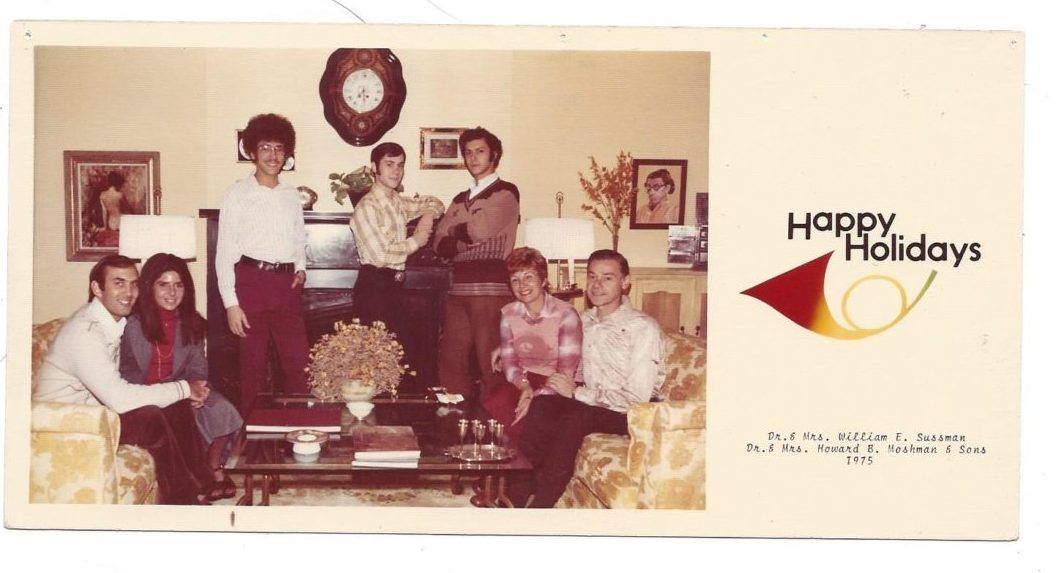
In the ‘70s it was geometric facial hair and auburn afros. In the ‘80s it was coordinating Hawaiian shirts and dresses, In the ‘90s it was striped polos, and across all decades, the glamorous matriarch Ruth wore just the right lipstick to set off her all-embracing smile.
In those pre-digital yuletides of yore, I waited for the Moshman card to sail through the mail slot, along with the avalanche of others. It didn’t feel like Christmas until this interfaith hug from the Moshmans came heralding in the holiday season. Year after year, smiling shoulder to shoulder on a plaid sofa, kids piled in front like puppies, I remember thinking this family is my extended family. I mean, the pediatrician never sent a Christmas card…
“We had more and more of a challenge in getting those sent out because the families were getting bigger, and the kids were away at college,” recalls Howard. “For several years I photoshopped missing people into the picture. I always set the camera up on a timer, and then I’d walk into the picture,”
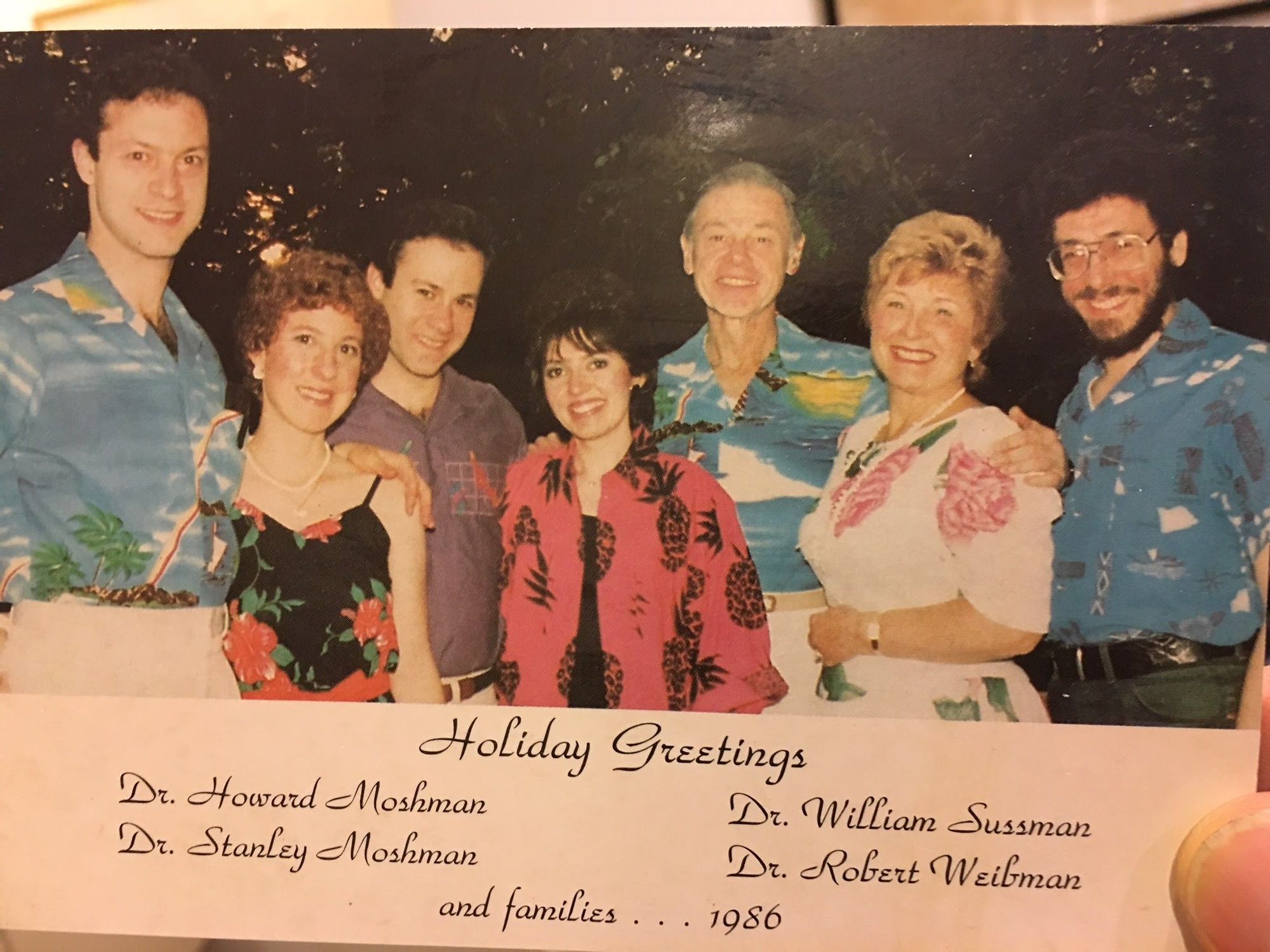
“With a certain Ruth Moshman yelling at everyone to stand still and smile,” adds Andrew.
“One Halloween a group of young people were on a treasure hunt around Brooklyn Heights,” says Howard. “They had a list of things to bring back, and they came to our door and said that they had to get the Moshman family holiday card. They figured the best place to go for it was to come to us, we’d have a spare.”
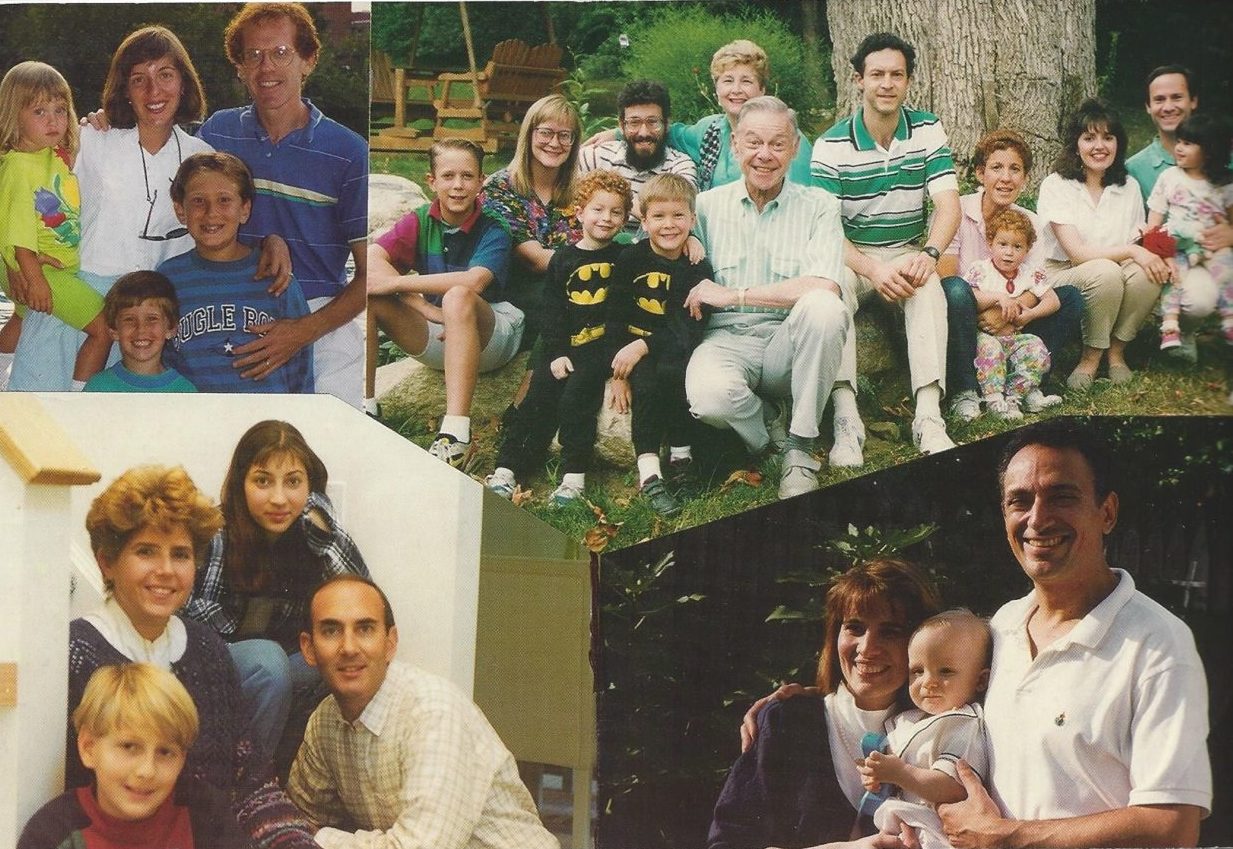
“You see!” I exclaim, “your cards are famous!”
As routine as nightly flossing, in leaving I must pause to swap clan news with Karen. She asks after my parents (still patients) and my kids, and offers updates from her camp too. This is how I learned that Andrew had once won competed in the same Brooklyn Public Library writing prize I had (though I doubt he walked away with an orchid corsage too).
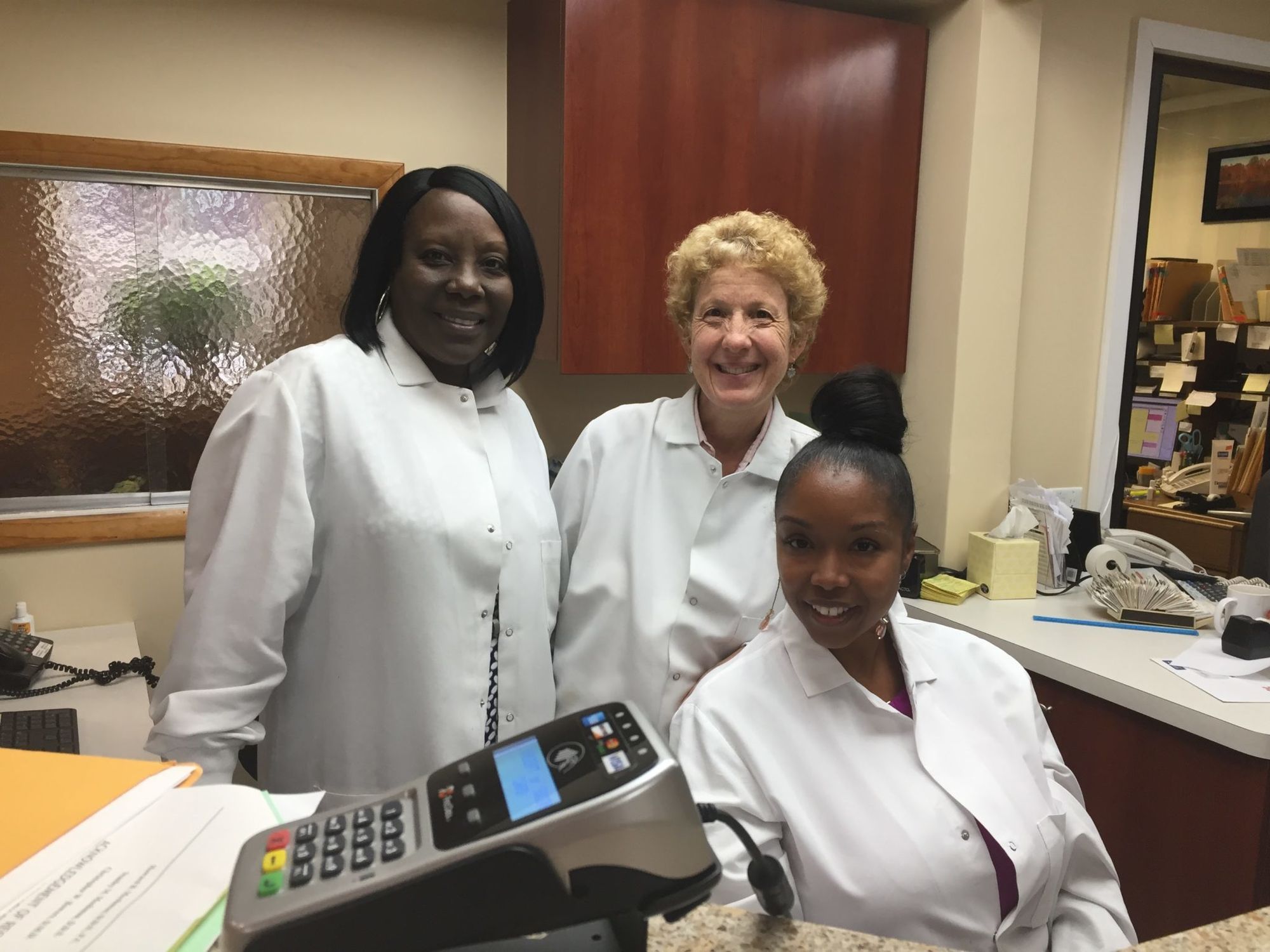
Catching up with Karen is also how I’ve followed the career of another Moshman, the not-a-dentist-but-still-uber-cool Lori, Andrew’s sister.
“Lori wanted to be a dentist before I wanted to be a dentist,” explains Andrew, “and now she studies insects, and I’m here.”
A triple major in college, Laurie studied plant biology, plant science and entomology. Currently she’s getting her masters at LSU.
“As a logical progression to someone who grows up in New York City, Laurie then went to work on a farm for three years,” Stan explains. “There’s an invasive freshwater plant called the greater salvinia, and there’s a weevil that eats only that plant, and she’s trying to figure out if that plant can be controlled by this weevil.”
Mom is always right.
Sure I’m getting long in the teeth, but thanks to the attentiveness of the Moshmans, I’m largely unaware of my teeth, which is a good thing. There are no pockets in my gums, where food lingers to chafe, no clicking, no sensitivity to frozen slushies or steamed milk. In my fifties now, my incisors continue to tear into a T-bone flawlessly. As usual, Mom was right and I’m grateful I trusted my pearly whites to the Moshmans.




